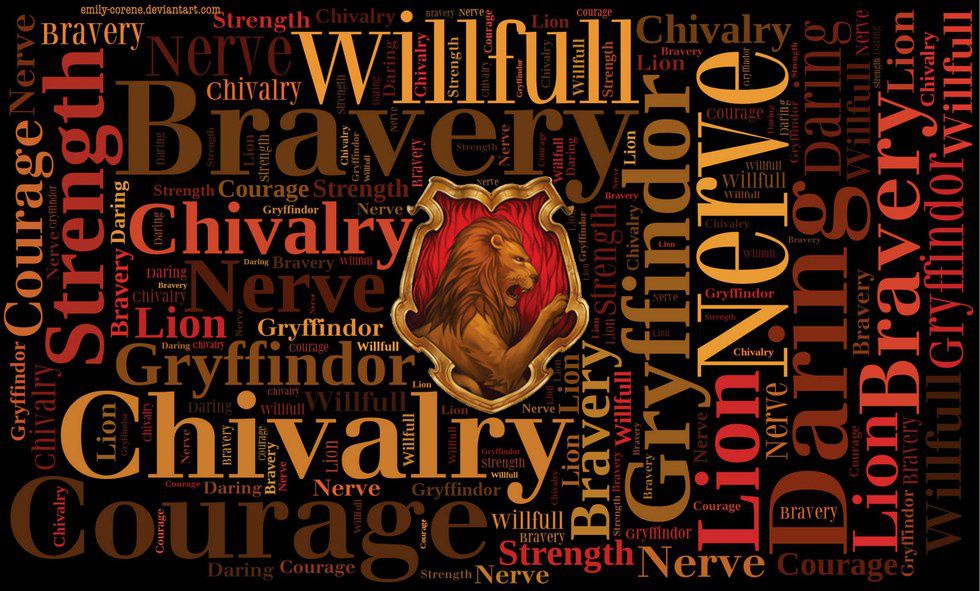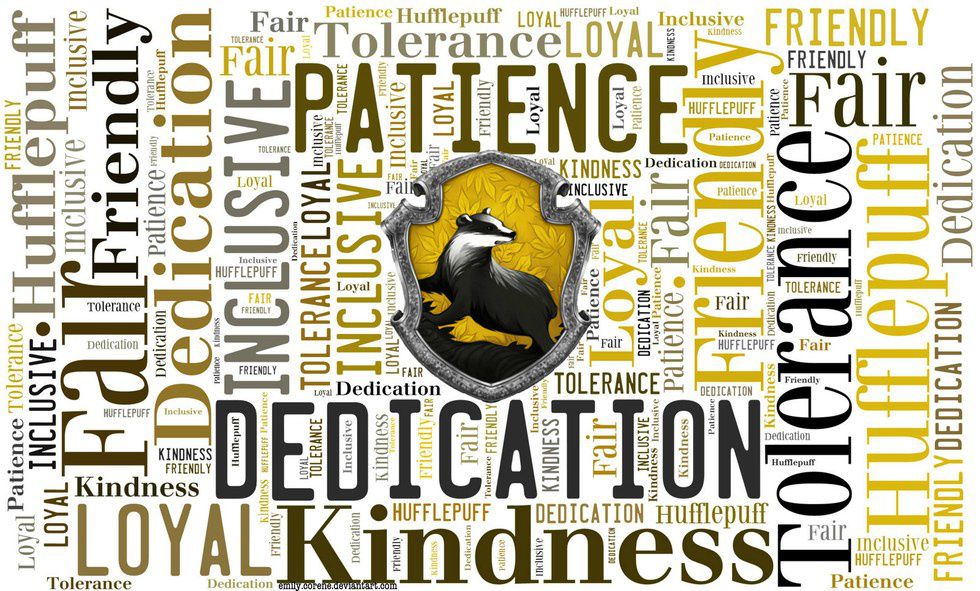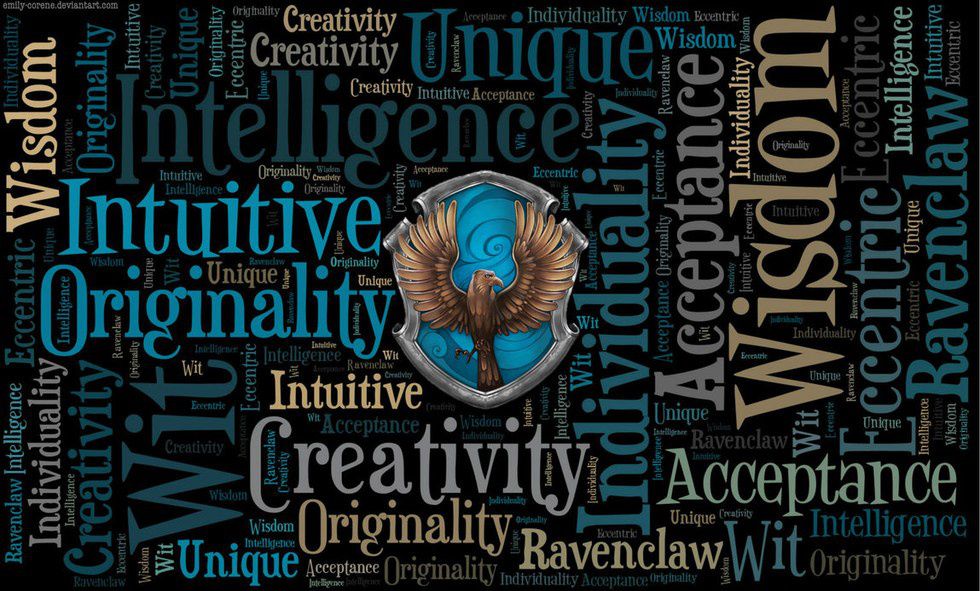Although we produce more art and essays than Patronuses and potions, Fresh Ideas will never come anywhere near feasts in the Great Hall and I’ve yet to see someone keep an owl as a pet, the similarities between Hogwarts and Stephens can be undeniable. These parallels are particularly noticeable when exploring the similarities between the four houses -- I mean schools -- that make up the student body at Stephens College. Whether you’re studying in the Performing Arts, School of Design, Health Sciences or Interdisciplinary Studies, there is a Hogwarts house that offers a perfect counterpart to your program.
School of Performing Arts:
Anyone pursing a degree in Performing arts probably has nerves of steel. The School of Performing Arts requires students to not only perform seemingly impossible routines in front of massive crowds but also to accept the ambiguity that comes with choosing to pursue a career in acting, choreography, dance, music, theater management, singing, set design and technical theatre. This unabashed bravery when it comes to pursuing what they love, marks students in the School of Performing Arts as clear lions.
Those enrolled in the school are among the most vocal and opinionated at Stephens. They have a tendency not to back down when it comes to their beliefs. The tremendous amounts of time Performing Arts students spend together at Boji allow those in the program to become as tight knit as everyone in the Gryffindor common room.
Like Gryffindor, The School of Performing arts has emerged as one of the major leaders on campus. As the 11th best theater program in the United States, according to Princeton Review, The School of Performing Arts sticks out as clearly as Gryffindor throughout the Stephens Campus.
School of Design:
The School of Design is without a doubt the easiest school to sort. Although the programs require tremendous amounts of creativity, the School of Design is the most achievement oriented department at Stephens. Even the word choice used throughout the Stephens course catalogue reflects this level of ambition. The School of Design’s sections of the 2015-2016 curriculum catalogue refers to preparing students for future success a total of 12 times, more than all of the other schools combined.
Out of the programs offered at Stephens, the majors taught in The School of Design are among most easily applicable to the real world. Nevertheless, the fashion industry is notoriously ruthless and thereby has a tendency to attract only the most ambitious, determined students. Additionally, the school is helping students on their way to greatness by grading students on their presentation skills and professional presence.
All majors within the design department are required to complete at least one internship throughout their time at Stephens in order to graduate, but students are urged to complete more than one. Although majors outside The School of Design require students to obtain one internship, the department’s insistence that all students, in any of the school’s majors complete at least one internship further proves The School of Design place in Slytherin.
Professors within the School of Design also have a tendency to overload students in massive assignments, requiring them to consistently develop and make use of their cunning and resourcefulness to meet these seemingly impossible deadlines.
Much like the school’s literary counterpart, the culmination of determination, cleverness and ambition has allowed the program to come to the forefront and claim the title of the 13th best fashion program in the world, according to Business of Fashion. This praise can cause some of program to believe that they work harder than any other program, and can lead to levels of contempt for some of the seemingly less intensive courses of study. Plus, design student’s knowledge of Adobe Creative Cloud would allow them to create some cleverly designed buttons to throw shade.
School of Health Sciences:
At first glance, those enrolled in The School of Health Sciences look like obvious Ravenclaws. Their curriculum is undeniably challenging and grades are largely dictated by challenging exams. Classes are notoriously competitive and many of those enrolled go on to study their chosen specialty in graduate school. However, once we step back from the house’s stereotypes it becomes impossible to avoid a few major disparities between Ravenclaw and The School of Health Sciences.
Unlike Ravenclaws, the meticulous nature of the Health Sciences prevents students from being too creative and innovative in the classroom. When life and death hang in the balance, the best Physicians Assistants and Veterinarians will not be the most inventive but rather the most reliable. Many of the more free-spirited Ravenclaws would be stifled in the precise and rigorous careers that await health science students following their graduation. Instead, The School of Health Sciences is best reflected in the house of Hufflepuff.
Health science students embody each of the attributes associated with Hufflepuff, from their trustworthiness, and loyalty to their kindness, sense of justice and dedication, as each of these traits are required for success both in the classroom and in their future careers. Like Hufflepuff, Health Science students are undeniably hard workers. They toil away understanding the intricacies of biology, memorizing facts and working to understand the workings of the body.
Much like the badger, health science students are also prototypical caregivers, as their entire future careers are dedicated to helping the sick, injured or weak.
School of Interdisciplinary Studies:
Out of Stephens’ four schools, Interdisciplinary Studies is possibly the most challenging to sort. The school offers the most diverse assortment of majors, including everything from Creative Writing and Education to Digital Filmmaking and Psychology. Given Hufflepuff’s reputation for being the most inclusive house, Interdisciplinary Studies seems like it would be full of Badgers. Upon further investigation, however, it becomes clear that the school is a different beast entirely. Despite the dramatic discrepancies between programs, one distinctive trait sticks out to unify each of the majors: Creativity.
Perhaps no Hogwarts house is as closely tied to creativity as Ravenclaw. While achievement in the School of Health Sciences is highly reliant on hard work, creative thinking differentiates success from failure throughout Interdisciplinary Studies. The school’s diverse curriculum also serves to validate its ties to Ravenclaw. Much like its Hogwarts counterpart, those enrolled in the school are entirely devoted to their subject of interest and can be decidedly quirky- looking at you Creative Writing majors.
Each of the traits Ravenclaw’s value are paralleled by a handful of programs under the Interdisciplinary umbrella. The emphases on intelligence, acceptance and wisdom perfectly match Education, Human Development, Forensic Studies and Psychology, while wit, individuality and originality are perfectly suited for Creative Writing, Digital Filmmaking and English.





























